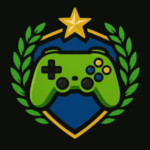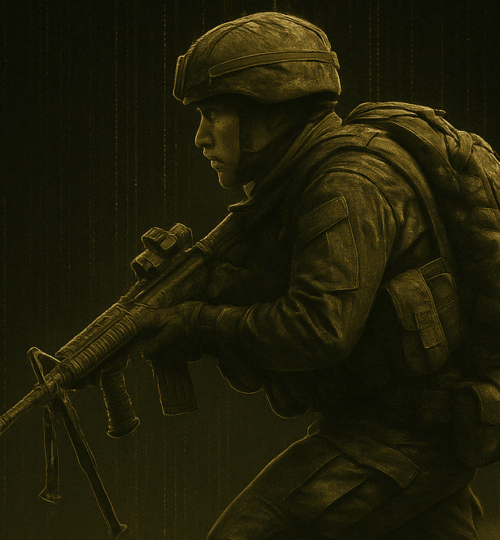
![]() We’ve always said the Global Warfighter League was a league by gamers, for gamers. We meant it and will continue. Now, nearly two decades after our initial launch, we’re bringing the Global Warfighter League back bigger, better, and built for modern competition.
We’ve always said the Global Warfighter League was a league by gamers, for gamers. We meant it and will continue. Now, nearly two decades after our initial launch, we’re bringing the Global Warfighter League back bigger, better, and built for modern competition.
That means a complete overhaul: the website, our competitive infrastructure, databases, and web applications are all being updated to meet the demands of 2025 and beyond. We’re building from a new hybrid platform on the web that now includes a full-featured Discord server, and we’re excited to start rolling out the same features our community enjoyed in 2005 back online today.
Starting with the Archives
 The first major step in this revival is restoring the Archives. This includes bringing back the leaderboards—complete with past Players, Teams, Seasonal Leagues, Tournaments, and Ladders from the original Global Warfighter League-supported titles. We believe that in order to earn credibility again and honor our original commitment to the community, we have to reestablish these stats. The good news? We still have the databases and files to make that happen. What’s changing is how we integrate them into the new system.
The first major step in this revival is restoring the Archives. This includes bringing back the leaderboards—complete with past Players, Teams, Seasonal Leagues, Tournaments, and Ladders from the original Global Warfighter League-supported titles. We believe that in order to earn credibility again and honor our original commitment to the community, we have to reestablish these stats. The good news? We still have the databases and files to make that happen. What’s changing is how we integrate them into the new system.
The Technical Challenge
Here’s the catch: the original site, built in 2004, was powered by PHP 3.x and designed around MySQL queries – technologies that have since become obsolete. PHP is currently in the 8.x branch, and many of the functions we used back then have been deprecated or outright removed. The same goes for the leaderboard infrastructure, which was tightly coupled with a hybrid version of PHPBB v1 and PHPBB2. Back then, GWL was cutting edge. Now, it’s a legacy beast.
Our plan is to migrate the platform to a customized WordPress stack, supplemented heavily by our Discord server for the community and event management features. This modern approach will allow us to tap into the rich ecosystem of WordPress while maintaining full control over custom leaderboard and stat modules.
Database Migration Strategy
 We haven’t finalized whether we’ll go all-in on MariaDB with PDO just yet, but we’re seriously considering it. We’re thinking long-term, about scalable apps, potential mobile extensions, and a unified system that can handle both web and mobile interfaces without breaking a sweat. So for now, we’re in an architectural planning phase.
We haven’t finalized whether we’ll go all-in on MariaDB with PDO just yet, but we’re seriously considering it. We’re thinking long-term, about scalable apps, potential mobile extensions, and a unified system that can handle both web and mobile interfaces without breaking a sweat. So for now, we’re in an architectural planning phase.
That said, here’s the roadmap we’re working from:
Step 1: MySQL → MySQLi
Our first goal is to get things back online quickly, so we’re starting with a conversion from legacy mysql_* functions to MySQLi (mysqli_*). This “improved” version is a drop-in upgrade for developers familiar with the original MySQL API and offers immediate benefits: prepared statements, procedural or OOP styles, and better security.
This phase is about stabilizing the application and restoring basic functionality while keeping the code close to its original logic. Think of it as a compatibility mode but safer and future-proof enough to hold us over until the next phase.
Step 2: MySQLi → PDO
Once things are stable and running under MySQLi, we’ll begin refactoring the entire database layer using PDO (PHP Data Objects). PDO gives us a consistent, modern, and abstracted interface for working with multiple database types, not just MySQL. This allows us to write cleaner, modular code and sets us up to use MariaDB effectively when we’re ready to switch.
Where PDO really shines is in database abstraction, allowing future flexibility (say, switching to PostgreSQL down the line) without rewriting every query. It also supports named placeholders, robust error handling using exceptions, prepared statements, and transaction control all essential for modern, secure web applications.
Why MariaDB?
MariaDB is essentially a performance-enhanced, open-source fork of MySQL 5.5. It’s backward compatible, meaning we can drop it in to replace MySQL with very little effort. But it’s also more than just a stand-in it comes with better replication, performance improvements, and support for advanced storage engines like Aria and ColumnStore, making it perfect for a cloud-first future.
So, the phased approach looks like this:
Legacy MySQL → MySQLi (fast fix) → PDO (modern rewrite) → MariaDB (cloud-ready backend)
This lets us modernize in steps first getting the system functional with the least disruption, then focusing on scalability and maintainability.
The Mobile Factor
One of the biggest limitations of the original GWL site was its lack of mobile support. Back in the day, we had two separate CSS files: one for Internet Explorer, and another for Firefox (with Chrome just coming onto the scene). It was a mess, but that was the norm.
Now? We’ll be using modern responsive CSS, written to support both mobile and desktop in a unified stylesheet. Each section of the site will have its own modular styles where needed, but the bulk of the design including mobile support will live within a central file. This keeps our class management streamlined, avoids duplication, and makes long-term updates easier.
The Initial Infrastructure for the Website
 We’ll be setting up the site infrastructure somewhat in the same vein of what we had 20 years ago. We still believe in the features that made us such a great site back then. We’ll have players (users), and they’ll be able to form themselves into groups (teams), and teams will be specific to games allowing clans or groups to be able to have multiple teams but only one team for each game they’re engaged with unless they have different rosters for each team which allows for larger clans that may have many players. For instance maybe a team might have multiple 2v2 competitive teams if the ladder or tournament is for teams that small. Tournaments will allow creation of new teams but tournament team rosters can’t have players on other teams within the same tournament.
We’ll be setting up the site infrastructure somewhat in the same vein of what we had 20 years ago. We still believe in the features that made us such a great site back then. We’ll have players (users), and they’ll be able to form themselves into groups (teams), and teams will be specific to games allowing clans or groups to be able to have multiple teams but only one team for each game they’re engaged with unless they have different rosters for each team which allows for larger clans that may have many players. For instance maybe a team might have multiple 2v2 competitive teams if the ladder or tournament is for teams that small. Tournaments will allow creation of new teams but tournament team rosters can’t have players on other teams within the same tournament.
Esports
 Esports will be the section where we’ll be creating this infrastructure. Esports will be divided up into games and then potentially divided up into individual ladders and other competitive events specific to the game. We’re still hashing much of this out because we’re still unclear on how we’ll be moving forward with competition and the new platforms coming into play. We don’t want to commit ourselves into something that may change.
Esports will be the section where we’ll be creating this infrastructure. Esports will be divided up into games and then potentially divided up into individual ladders and other competitive events specific to the game. We’re still hashing much of this out because we’re still unclear on how we’ll be moving forward with competition and the new platforms coming into play. We don’t want to commit ourselves into something that may change.
What we do know is that we’ll be bringing back the archived leaderboards for the games we supported in the past. Anything beyond this goal is still up in the air and is tentative at best. As mentioned we don’t want to commit or overstep where we can’t see the future issues or problems that need to be solved.
Keep up with our progress and changes to this overall plan on our blog.

